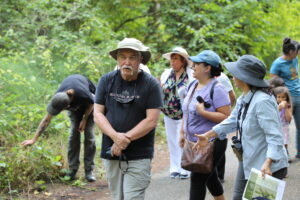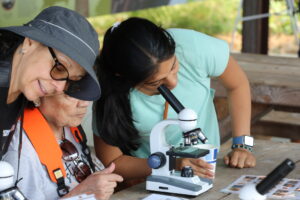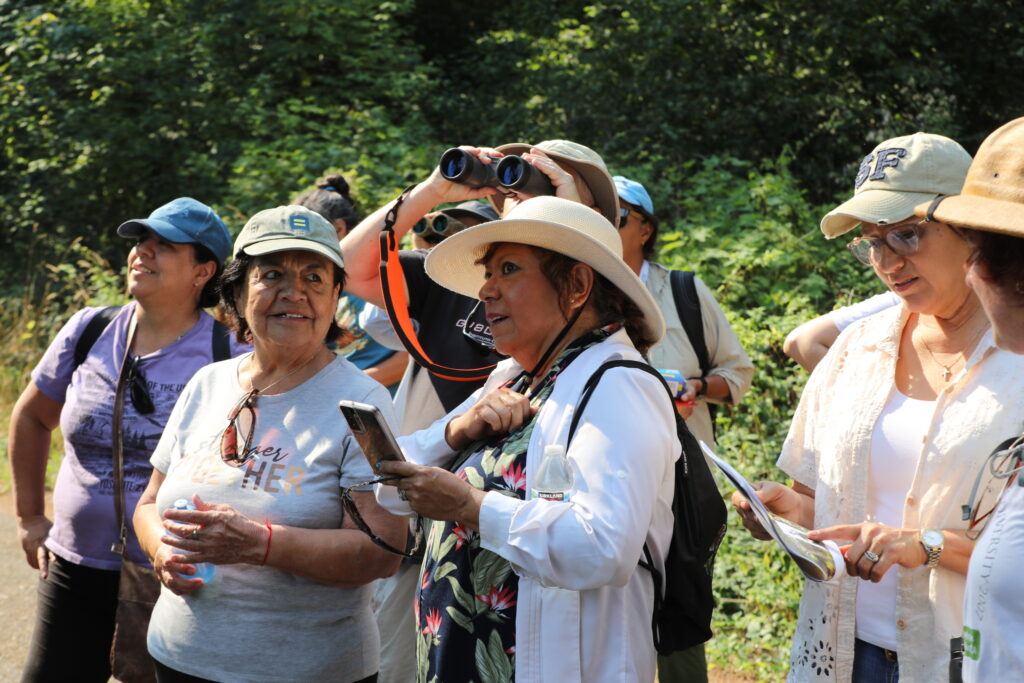On August 24, PEI Regional Coordinators Lara Tukarski, Daniel Cuevas, and Molly Griffiths set up activity tables in preparation to receive enthusiastic participants during the Woodard Bay Bilingual Interpretive Walk at Woodard Bay Natural Conservation Area in Lacey, Washington. The team hosted families from North Thurston Public Schools as well as the Olympia, Tumwater and Shelton school districts at stations featuring leaf print art, sea birds’ natural history and observation of live plankton under a microscope.
PEI’s Multicultural Engagement Coordinator Lourdes Flores organized the event in partnership with Washington Department of Natural

Photo: Will Rubin, DNR Communications Manager
Resources Youth Education & Outreach Program Manager Clare Sobetski and her team, botanist Jesse Miller, ecologist Irene Weber, ecologist Regina Johnson, and Environmental Justice Planner Ashley Blazina-Cooper.
Washington Department of Fish & Wildlife biologist Emily Butler also shared information about managing bats living in homes and on properties in the Pacific Northwest. All the interpretive signs were translated to Spanish by DNR team, and a Spanish interpreter was on site for Spanish and English speakers alike to enjoy the interpretive walk.
Flores accompanied many of the Spanish-speaking guests on the interpretive walk and as they made their way through the stations.
“People were very interested,” she says. “They were motivated to learn about every activity at the kiosks and they learned a lot. They had a great time.”
Sobetski says the organizers were happy with the turnout. “We were able to bring in community members from the demographic that we wanted to serve,” she says. “The mix of art and education and recreation was what they were looking for and they seemed to have a great time.”
Of approximately 30 attendees, most of them stayed until 7 pm, at which time a stream of visitors arrived to watch the bats that live under

the abandoned train rails. Butler enjoyed interacting via the interpreter with visitors who had a different frame of reference for bats based on where they came from.
“We talked about bats living in caves, which is different from how they live in western Washington,” she says. “They were very interested and comfortable asking a lot of questions.”
All in all, the guests had a wonderful time. As they left, some could be heard wondering aloud why they had never visited the Woodard Bay trail before, and commented on the interesting facts they learned that day.
